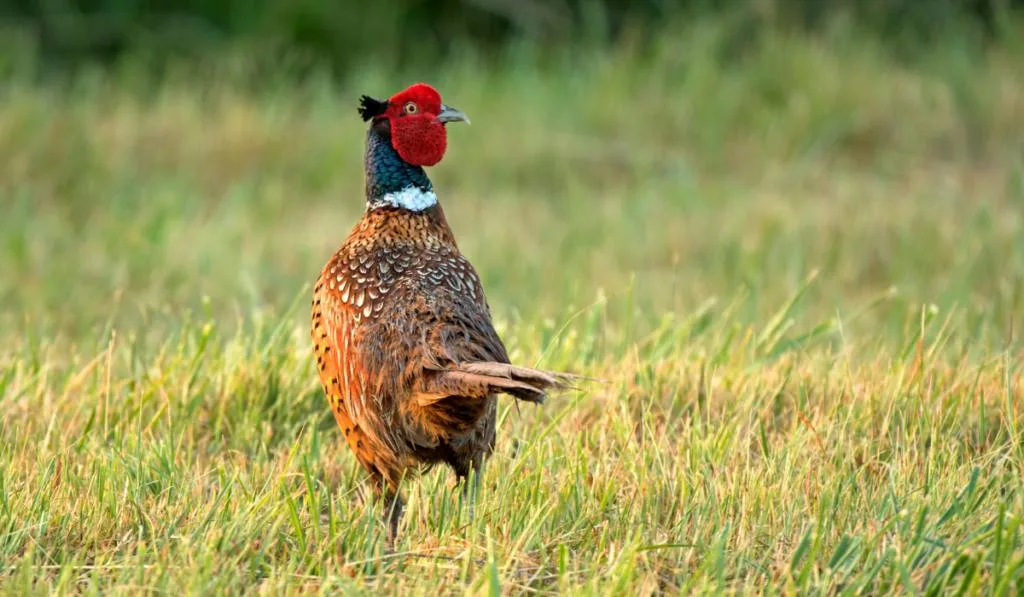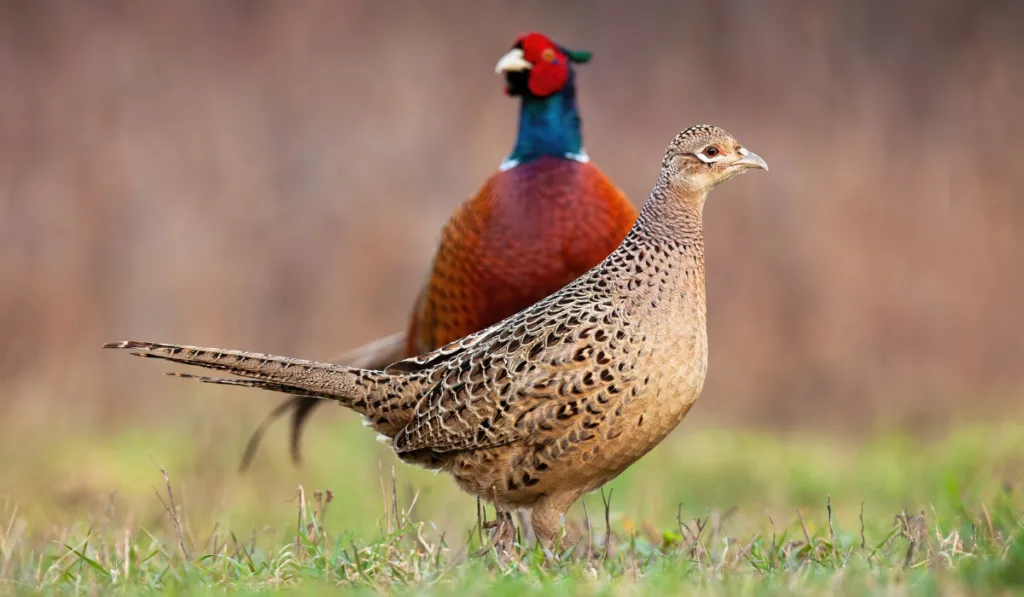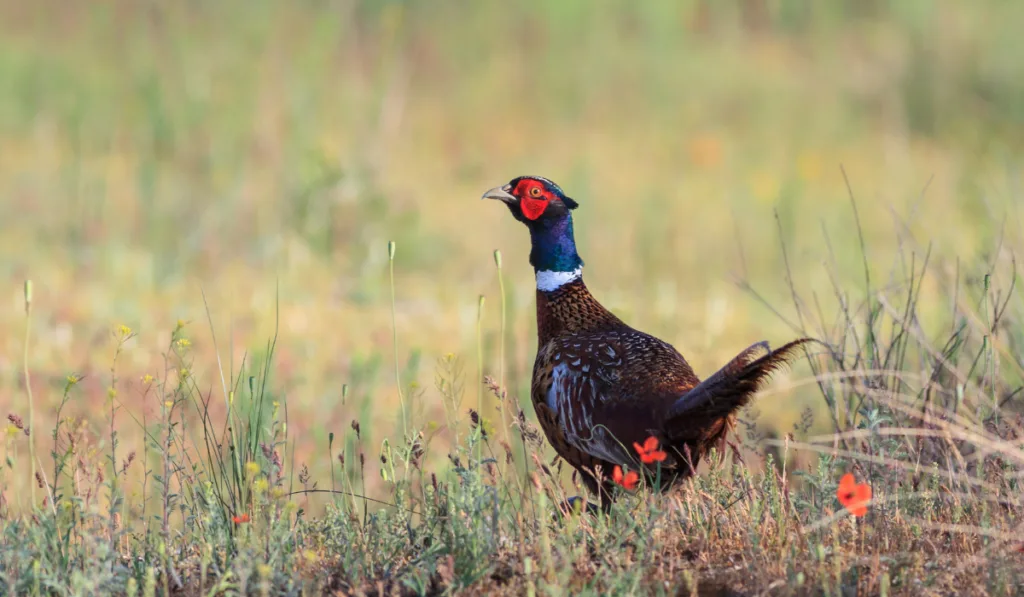Are you thinking about raising pheasant on your farm or homestead for profit? Raising pheasants is a profitable business if done correctly. Game birds are always in high demand.
You can buy pheasant eggs at $250 for 360 eggs, pheasant chicks at $5.00-$7.50 depending on the age, or adult pheasants at $10.75-$16.00 each to use as breeders. People who raise pheasants for-profit use pheasant chicks as a starting point.
This article discusses everything you need to know about the cost and profitability of raising pheasants on your farm.

Table of Contents
Buying Pheasant Chicks
Raising game birds can provide a good income if you are looking to maximize the value of your farmland. Pheasants can be raised on small acreage and, as it is seasonal, they can offer you a good balance to other farming activities.
Depending on the age of the chicks, you can expect to pay anywhere from $5.00 to $8.50 per pheasant chick.
Pheasant Chick Prices
- Melanistic Mutant: $4.40 each
- Ringneck: $4.20 each
- Kansas Ringneck: $4.20 each
- Manchurian Cross: $4.40 each
- Chukar Partridge: $3.29 each
- Extra Large Ringneck: $4.50 each
- At 6-weeks old: $4.40 – $5.00
- At 8-weeks old: $5.20 – $5.85
- At 12-weeks old: $7.50 – $8.50
Buying Adult Breeding Pheasants
A pair of breeding pheasants costs upwards of $45; rarer birds like Siamese Firebacks are at the top of the range and the most difficult to breed and cost $550.00 per pair.
Prices are listed below for young birds; please note fully colored breeding pairs cost more.
- Ring-Necked Pheasants: $40 per pair
- Swinhoe Pheasants: $50 per pair
- Golden Pheasants: $45 per pair
- Nepal Kalij Pheasants: $50 per pair
- Lady Amherst Pheasants: $60 per pair
- Reeves Pheasants: $50 per pair
- Silver Pheasants: $45 per pair
- Red Golden Pheasants: $131.00 per pair
- Siamese Fireback Pheasants: $430 per pair
Hatching Pheasant Eggs
If you want to rather try your hand at rearing pheasant chicks, you can buy pheasant hatching eggs in large quantities that will lower the cost.
- 360 pheasant hatching eggs at $260- per case
- 180 pheasant hatching eggs at $150 half case
Egg Quantity and Price
- 1-49 eggs: $0.95 each
- 50-179 eggs: $0.90 each
- 180-359 eggs: $0.80 each
- 360-719 eggs: $0.72 each

How Much Does It Cost to Feed a Pheasant?
From hatching to maturity, it takes an average of 22 pounds of food to keep a pheasant growing and healthy. Considering this, feed costs about $4.40 per bird. This is up from around $1.54 twenty years ago.
It is best to start pheasants at a protein level of 28% then step it down as they get older. At three weeks, it can be lowered to 26% and then down to 20% at six weeks until time to sell them at 24 weeks.
One way to cut costs is to buy feed in bulk. Feed mills give price breaks to farmers who buy their products in large quantities.
Added Costs
The production costs of pheasants are like other types of poultry. You should consider the following costs before starting.
- Chick costs
- Bird Housing
- Land
- Equipment
- Feed
- Litter
- Fuel
- Electricity
- Veterinary care
- Labor
- Market
- Taxes
It is important to keep records of your costs; this way, you can evaluate the profitability. Chick costs and feed represent 80 percent of the total production cost. Another big equipment expense is the watering and feeding system.
Pheasant housing costs depend on the intended use of your birds. Pheasants raised for release need to be conditioned in totally enclosed flight pens before release.

How Much Land Do You Need to Raise Pheasants?
The investment required for the commercial production of pheasants and their products is probably the first consideration you should make. In commercial pheasant farming, there will be a considerable investment required at the start.
Other than the land, there is the investment of pens and equipment, which can be high at first. And then an up-front investment for the birds, whether one starts with hatching eggs, started chicks, or breeders.
However, it is entirely possible to raise pheasant chicks on a small homestead. To raise chicks, you can easily do it on 1.25 acres with pheasant chicks aged up to seven weeks.
It is important to rest the land for three years to prevent disease cycles, so factor in three times that area when calculating the requirement.
If you are interested in managing land for adult pheasants, you should create areas of 10 to 20 acres in size. Each area should consist of 3 to 7 acres of nesting cover planted with grasses and legumes and 3 to 7 acres of heavy winter cover plants like native grasses and switchgrass.
Pheasants are naturally free-roaming wild birds that fly a lot higher than chickens so you also need to have a soft mesh top to close the area to stop any birds escaping and predators or wild pheasants from getting in.

When Should You Buy Pheasant Chicks?
The best time to buy pheasant chicks is from mid-June throughout the rearing season into September. Black Neck, Manchurian, Melanistic, and Ring Neck are all available for large orders, and it is recommended to order early to guarantee an adequate number of the breed you want.
Profitable Pheasant Farming
It is possible to lower the cost of your pheasant farming if you sell the eggs, meat, and adult breeding stock for a profit. Raising pheasants, if done correctly, can be very profitable as pheasants are in high demand during hunting season.
Selling the Meat and Eggs
Making an income from pheasants is possible. If you do not want to raise pheasants for hunting purposes, you can sell the meat and eggs. Pheasant meat and eggs are pretty widely used, although they are not specially bred for this purpose.
Pheasant eggs are larger than chicken eggs, packed with healthy nutrients, and very tasty on their own and in many recipes. Like chicken eggs, pheasant eggs provide plenty of protein, essential amino acids, and many other vitamins, including vitamins D and B. Pheasant eggs are light and less rich, like a quail egg.
Most people say pheasant meat tastes the same as turkey meat. Farm-raised pheasants have a taste closer to chicken than wild pheasants because of the commercial feed they eat.
Pheasant meat is leaner than chicken meat; therefore, a healthier choice of meat. Pheasant is easy to butcher, and most people just use the breast for meat as the rest of the bird doesn’t have much meat.

Selling to Restaurants
You can always contact restaurants in your area; they often like to have pheasant on the menu as a delicacy. If you find your area lacks restaurants, pheasant meat can also be shipped to areas with a higher demand for pheasant meat. Selling pheasant meat will reduce your expenses and provide a profit.
Pheasant meat can be sold for $2 to $3 per pound of dressed weight. Your income will depend on the production cost to raise pheasant to market weight.
Pheasant hens and roosters can reach mature weight by 16 to 18 weeks of age. Pheasants will consume about 13.25 pounds of feed before reaching market weight.
Hunting
In nature, pheasants are game birds and popular to hunt. If you’re in a community where hunting is practiced, you can breed pheasant to release for hunting.
Breeding birds for hunting brings in a nice sum of money. Pheasants need to be raised with minimal human contact to maintain ethical hunting standards when raising pheasants for hunting purposes.
Selling Hatching Eggs
Another way to lower your cost and create an income when raising pheasants on your farm is to sell hatching eggs to other farmers interested in raising pheasant themselves.
Releasing into the Wild
Some people also raise pheasants to be released into the wild to increase local pheasant populations. State governments in many areas encourage this and even offered grants for farmers to do this.
If you want to raise pheasants for release, they should be released at eight weeks old or you must wait until they are fully grown.
Conclusion
There are several costs to consider when raising pheasant commercially. Decisions like the amount of investment, chick costs, marketing conditions, size of pens, ad available land are all determining factors in costs.
The main goal of pheasant farming is to keep the cost as low as possible while producing a quality product.
Some of the costs are obvious, while some costs may be hidden. The important thing is to know all the costs of your pheasant project before you start.
